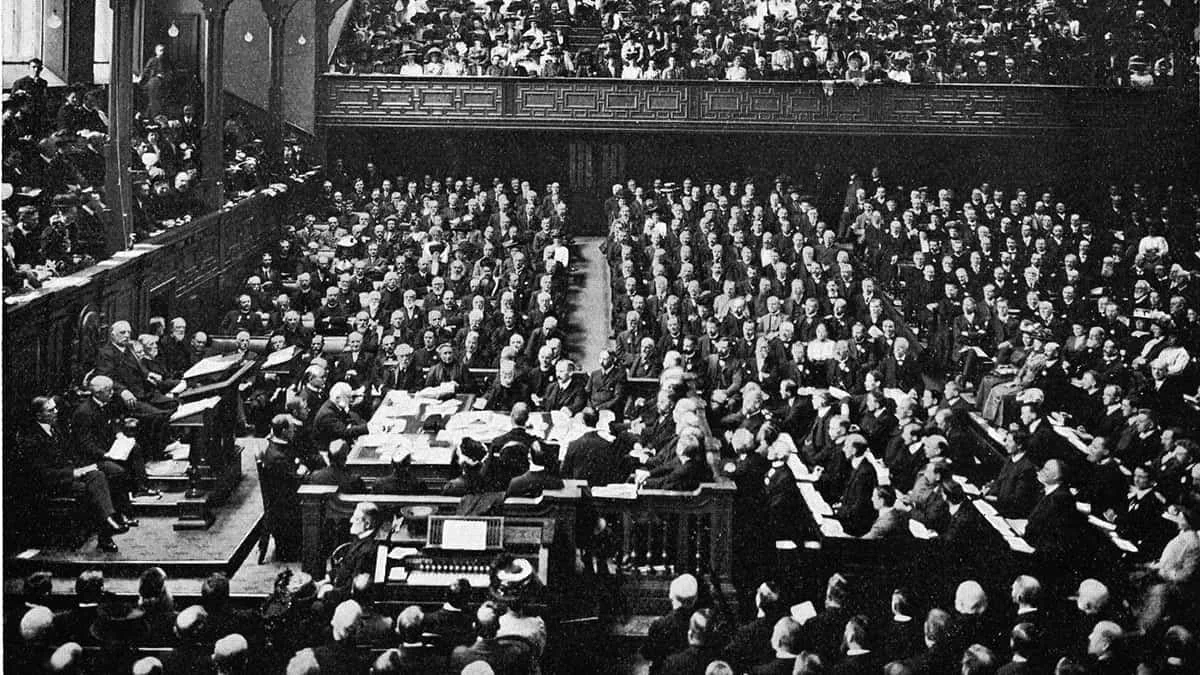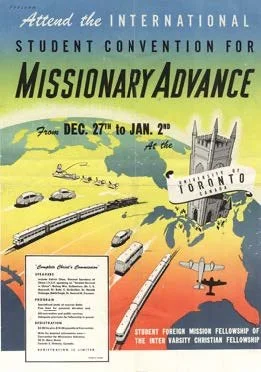Reclaiming What Was Lost
Returning the Church to the Heart of Missions
Article by Danny DavisonAn invitation to GCC Congress in Bangkok, Thailand October 2026.For much of church history, missions was inseparable from the local church. The very first missionaries—Paul and Barnabas—were sent out by a local congregation in Antioch (Acts 13:1–3). From its earliest days, the church was not just a supporter of missions—it was the beginning, means, and end of missions. But over the past two centuries, something has changed.
The Shift: From Church to Agency
As the modern missions movement took shape in the 18th and 19th centuries, a practical development emerged: the formation of mission societies and agencies. These organizations helped coordinate support, logistics, and training for missionaries in a way that many churches were simply unequipped to do. One of the earliest examples of such a mission-centered association was the Northampton Baptist Association. The Northampton Baptist Association played a vital and catalytic role in the birth of the modern missions movement, particularly through its support of William Carey, often called the “father of modern missions.” Carey, a young pastor burdened for the unreached, ministered in a time when many churches in England were gripped by hyper-Calvinism—a theology that undermined evangelistic responsibility. In 1792, Carey published his treatise, “An Enquiry into the Obligations of Christians to Use Means for the Conversion of the Heathens,” calling the church to recover its missionary calling.
Later that year, at a meeting of the Northampton Association, Carey preached his now famous sermon on Isaiah 54:2–3: “Expect great things from God; attempt great things for God.” Moved by this vision, the association formed the Particular Baptist Society for the Propagation of the Gospel Among the Heathen—the first Baptist missions society—and sent Carey to India.
Two decades after Carey’s death, a young English man named Hudson Taylor set sail for Shanghai, China in 1853. Though not a contemporary of Carey, Taylor was deeply influenced by Carey’s legacy. He founded the China Inland Mission, which revolutionized missions’ strategy by taking the gospel deep into China’s interior. Taylor’s bold innovations—including contextualizing through Chinese dress and language, and welcoming ordinary believers into missions—broke with the norms of the day and opened new doors for gospel advance.
Upon the shoulders of Carey and Taylor a renewed interest in the unreached took hold of university students across Great Britain. In time, movements like the Student Volunteer Movement and the Edinburgh Conference of 1910 catalyzed a generation of young people with a heart to evangelize the world. More agencies began to emerge, facilitating this flood of eager and engaged young missionaries. By the mid-20th century, hundreds of agencies had sprung up across the globe, enabling thousands of missionaries to reach the unreached.
These developments were born from zeal and love. But they came with an unintended consequence: The local church slowly drifted from the center of the missions movement.
The decades following the Edinburgh Conference were marked by global economic depression, the rise of nationalism, and two devastating world wars. The church and missions were not immune to these global events. Church numbers began to decline. A renewed questioning of social norms and expectations emerged. In response, in 1946, Intervarsity Christian Fellowship convened an international conference called the International Student Convention for Missionary Advance. C. Stacey Woods, Intervarsity’s leader, was motivated by a desire to inspire a new generation of students to take the gospel to the nations in the wake of World War II. Initially held in Toronto, it moved in 1948 to the University of Illinois at Urbana-Champaign, where growing crowds gave the conference its enduring name. Urbana, at its peak, would gather 20,000 attendees at its triennial conference, and would act as one of the major mobilization forces for missionary service.
Twenty years later, in 1966, churches across the globe gathered in Berlin, a city that was synonymous with the devastating events of the previous decades, for The Berlin Congress on World Evangelism. The rallying cry of Berlin was "One Race, One Gospel, One Task." A call was made for the global church to unite in order to save those perishing in their sins.
On the heels of Berlin came the Lausanne Congress on World Evangelization (1974). Lausanne, profoundly influenced by evangelist Billy Graham and pastor John Stott, marked a significant turning point in modern missions. They sought to unify global Christian leaders around evangelism and gospel proclamation, influencing missions’ strategies, theology, and evangelistic outreach to this day. Leaders like John Stott and Billy Graham emphasized that missions is the task of the whole church taking the whole gospel to the whole world.
Nearly sixty years later, missions face new challenges. While evangelism remains essential, confusion around the role and authority of the local church in missions has emerged. Berlin and Lausanne, although motivated by a good and godly desire, resulted in a move away from the local church to the global church. Urbana has, unfortunately, tried to integrate social justice with missions, drifting from its historical roots. Theological and ecclesiological distinctives have become marginalized, ecumenicalism became the prevailing trend.
The Church Got Lost
Somewhere along the way, churches became donors instead of senders. Pastors became distant observers instead of shepherds of missionary souls. Missionaries, once deeply accountable to elders and congregations, increasingly found themselves untethered— supervised by boards, guided by strategy documents, and encouraged to chart their own path.
This is not a condemnation. God has used these agencies and structures for incalculable good. The gospel has advanced to places once considered unreachable. But even so, we must be honest—today, countless missionaries are serving faithfully but completely disconnected from any real relationship with a local church.
The very institution Christ promised to build—the local church—has become peripheral in the very work it was commissioned to lead. This is why we believe it’s time for a new movement.
The Great Commission Congress: October 2026 · Bangkok, Thailand
For the last three years a group of around 60 missionaries serving across the globe have gathered as The Great Commission Council. These long-term missionaries from a variety of agencies, sending churches, and home nations, shared a commitment to the local church. For three summers they have convened to consider challenges faced in the modern mission’s movement and to propose Biblical, Church-Centered Solutions. The members of the Great Commission Council are now inviting the Global Mission Movement to gather for a new congress, for a new era.
The Great Commission Congress is a global gathering of missionaries, church planters, and pastors committed to one central idea: It’s time to reclaim the local church as the beginning, means, and end of world missions.
This is not a rejection of what came before—it’s a grateful continuation. We honor the legacy of William Carey, Hudson Taylor, the Student Volunteer Movement, and Lausanne.
But we also believe it's time to reclaim what has been lost:
• To raise up missionaries who are truly sent by and accountable to local churches.
• To equip churches to send well—not just fund well.
• To see pastors intentionally raising up and sending out their best.
• To root cross-cultural ministry in healthy ecclesiology, not just global strategy.
• To plant healthy, indigenous churches that are committed to the Great Commission.
Why Now?
Because we live in a moment of unprecedented opportunity and peril. The number of unreached people remains vast. Nationalism is again on the rise. False gospels abound. Burnout and isolation among missionaries are rampant. And yet, in many places, churches are awakening to their biblical mandate to go, send, support, and shepherd.
What the Congress Will Be?
The Great Commission Congress will not be a conference driven by platforms, brands, or programs. It will be a congress for:
Churches: to recover their central role.
Missionaries: to find deep, biblical encouragement.
Church Planters: to strategize not apart from, but from within the church.
This is a call back to biblical missions. A call to build on what is good. A call to realign the mission’s movement with Christ’s chosen vehicle for gospel advance: the local church.
Will You Join Us?
Missions was never meant to be an outsourced task. It is the church’s great commission. And the time has come to return it to her hands. Join us in Bangkok, Thailand in October 2026.
Let’s reclaim what has been lost.
Let’s restore what God intended.
Let’s rediscover church-centered missions for the glory of Christ among the nations.
Danny Davison and his wife, Brandy, have been serving in Asia for over ten years. They have three young sons and a strong passion for the local church. After years of church planting in a highly restricted country, they now work in Bangkok, Thailand, where they helped establish an English-speaking church and are actively engaged in translation and publishing projects. Daniel also serves as the Field Director for their organization and is on the advisory committee for the Great Commission Congress.




